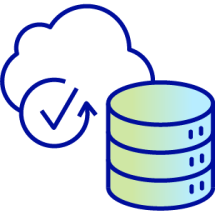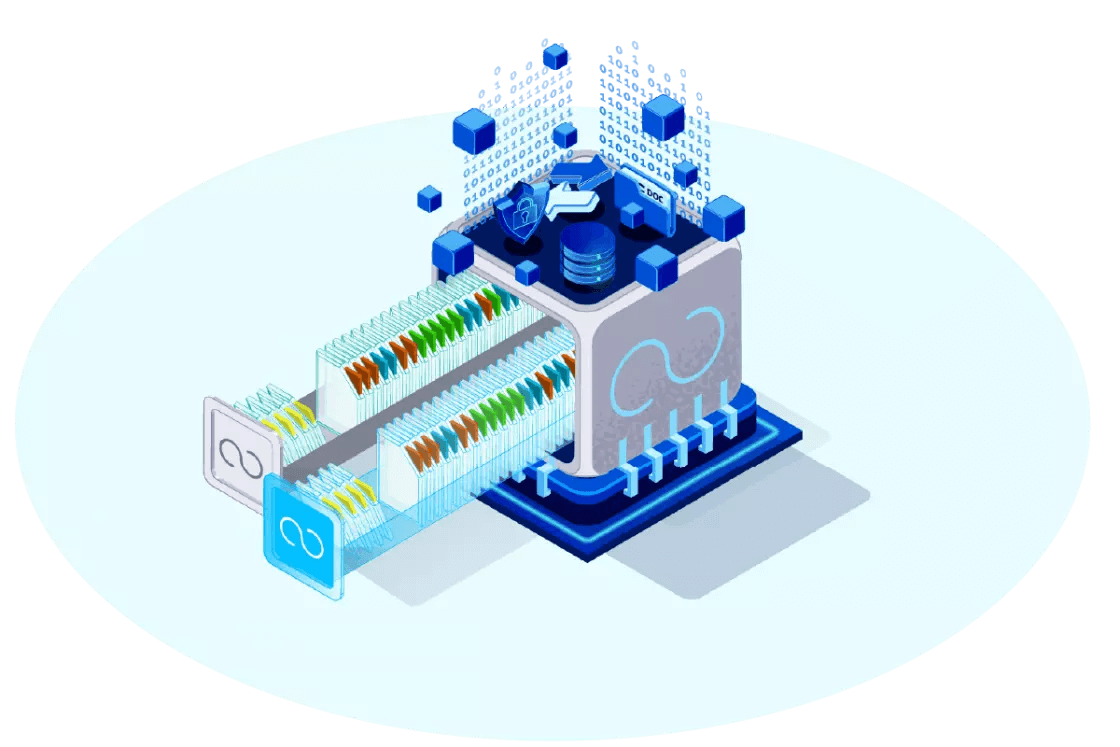How to Build a Backup Strategy for Your Startup
Protect your data. Ensure business success.
Protect your assets with a reliable backup strategy. Read on to learn how to create one!

What is a backup strategy?
A backup strategy is a plan detailing how your business stores, protects and recovers its critical data in the event of an incident, such as a cyberattack or hardware failure. Establishing a backup strategy delivers peace of mind, helping you to minimize the risk of data loss and downtime, as well as contributes to business continuity.
Why is a backup strategy so important for startups?
Data is crucial for modern business life, and therefore, companies of all sizes must protect their data using backup and recovery strategies. However, whilst large businesses have the resources to implement such solutions, startups and small businesses often overlook them due to budget constraints and a focus on other priorities. This can be a costly mistake, as startups are more susceptible to data loss, and this can lead to financial and reputational damage, or even total business failure.
Here's why startups need a backup strategy:
Startups are more vulnerable to data breaches
According to Verizon, small businesses account for 43% of all data breaches[1]. This is because they often have limited financial resources to invest in data protection and there’s also a misconception that small businesses are less likely to be targeted compared to larger companies. As a result, small businesses are left exposed to malicious activities.

Startup culture can put data at risk
The nature of startup culture means that teams often work remotely, on-the-go, or using their own devices. Such a dynamic environment can heighten the risk of human error, theft and cyberattacks. For example, an employee might accidently leave their laptop on the train, lose a portable hard drive, or fall victim to attack via an insecure internet connection.

Startups are using big data
There are now more startups operating within the artificial intelligence (AI) and machine learning (ML) space. Both technologies are powered by big data i.e. extremely large datasets that cannot be managed and processed using traditional data management methods. This brings up fresh challenges around data protection, especially in terms of compliance and GDPR.

What are the 4 types of backup?
Full Backup
A full backup is when an entire dataset is copied and backed up in a single operation. It is the most comprehensive backup method, but also the most time-consuming and storage intensive, as it involves protecting such a large amount of data.
Incremental Backup
An incremental backup involves copying just the data that’s been modified since the last full, incremental or differential backup. It is faster than performing a full backup and requires less storage space, however, data recovery can be more complicated, as it means restoring multiple backups.
Differential Backup
Differential backup involves performing a full backup and then backing up all the data modified since the last full backup. While it offers a complete backup method and easy data retrieval, it can also be a slow process and requires more space compared to an incremental backup.
Mirror Backup
A mirror backup is when an exact replica of a dataset is backed up. Unlike incremental and differential backup, it doesn’t just backup modified data. Instead, it overwrites the entire backup destination with the updated data each time a backup occurs. Mirror backups are comprehensive and offer simple data recovery, but also require a huge amount of storage space.
How do I build a backup strategy?
Building a backup strategy for your startup is a simple process, but it also requires you to have a deep understanding of your specific business needs. You’ll need to determine exactly what data needs to be backed up, the method and frequency of backup, and how the data will be recovered. You’ll also need to test your strategy regularly to ensure its effectiveness.
Here are the steps to take:
01
Assess your data
First, you should assess your data and identify what you want to protect. This’ll usually be your critical data, such as customer and employee data, financial records, and any other data essential to the running of your business:
- prioritise certain types of financial and personal data to comply with GDPR and other data regulations.
- involve stakeholders, as they can highlight critical data unknown to your technical teams.
- consider data dependencies – is any of your data reliant on other data for functionality? If the answer is yes, both sets of data will need the same level of protection.
02
Decide the backup frequency
The next step is to decide how often you’ll backup your data. Will it be daily, weekly, monthly, quarterly, or less often? The answer to this will largely depend on how often your data changes. If it changes frequently or undergoes version control, it’ll require more frequent backups to prevent data loss. If it doesn’t change much, or is categorised as historical or infrequently accessed data, you might want to archive it to preserve its integrity and benefit from low storage costs.
03
Choose a storage solution
When choosing which storage solutions to adopt, many businesses use the best practice 3-2-1 approach: you keep 3 copies of your data (the original and 2 backup versions) on two separate storage solutions, with one copy stored off-site to protect it from cyberattacks, such as ransomware. At OVHcloud:
- you can back up your cloud-native application with automated Instance Backup,
- create another copy as an immutable Object Storage bucket,
- rsync your data to another Object Storage bucket in a distant location,
- create a cold copy with Cold Archive to store data offline.
04
Select a backup method
Next, you’ll need to decide which backup method suits your requirements – full, incremental, differential, or mirror. What you choose will depend on:
- how often your data changes,
- how often you’re performing backups,
- how easily you want to retrieve the data,
- what is the volume of data your storage solution can hold.
For example, choosing to perform a full or mirror backup every day will require a huge amount of storage space. It might be better for you to perform frequent incremental backups, which are fast, require much less storage space - and therefore costs you less.
05
Implement your backup strategy
It’s time to implement your backup strategy, but before you start, ensure it is clearly documented so everyone understands the processes, schedules, and people responsible. Then, perform your first backups. Schedule them regularly and monitor them to ensure effectiveness.
Looking for a backup-as-a-service solution?
06
Test your backup strategy
- simulate real-life data loss incidents by intentionally corrupting or deleting your data,
- restore it following your backup strategy processes.
Testing your strategy is especially important whenever you make changes to your IT infrastructure, such as when you implement new software, hardware, or operating systems, as even a small change to your infrastructure can significantly affect your backup processes.
Which OVHcloud solutions can support my backup strategy?

Object Storage delivers scalable, secure cloud storage. It is ideal for storing large datasets and data that needs to be accessed easily. Object Storage offers both full and incremental backup and can be used with leading backup software, such as Veeam, to build a consistent approach. With our S3* compatible API option available, you’ll also be able to access and transfer your data across platforms, and avoiding vendor lock-in. Object Storage is also highly cost-effective, with transparent pricing that gets cheaper as your data scales in the cloud. For startups wanting a simple solution, we recommend Standard Object Storage with Object Storage - Standard.

Cold Archive is a tape storage solution for long-term data archiving. Built on a resilient multi-datacentre infrastructure, it offers a secure and cost-effective method for storing high volumes of historic and infrequently accessed data. Cold Archive also support S3* compatible API for cross-platform compatibility, and data retrieval takes on average 48 hours.
File Storage
OVHcloud Startup Program
Since 2015, over 3,000 startups and scaleups from across the globe have joined the OVHcloud Startup Program and our ecosystem. We provide reliability and security to innovative businesses, enabling you to facilitate exponential and international growth.
*S3 is a registered trademark of Amazon Technologies, Inc. OVHcloud services are not sponsored or approved by, nor affiliated with Amazon Technologies, Inc. in any way.

